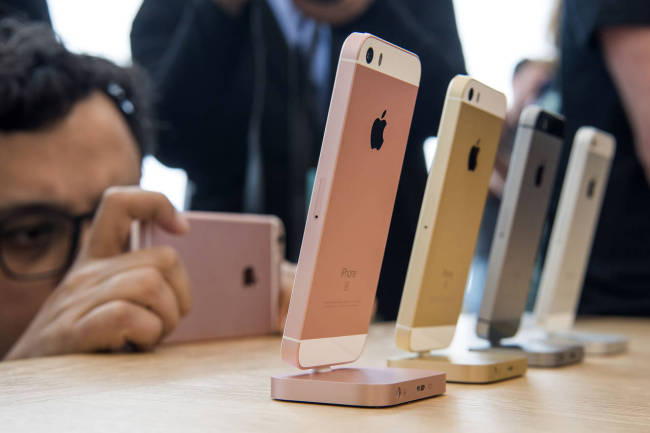OLED iPhone renews competition among display makers
After Samsung secures deal, LG and Foxconn cited as secondary suppliers
By Korea HeraldPublished : May 15, 2016 - 14:34
Apple’s adoption of an organic-light emitting diode screen is renewing competition among display makers.
According to recent news reports, Samsung has signed a deal with Apple to supply an annual 100 million OLED panels from the second quarter of next year for three years.
According to recent news reports, Samsung has signed a deal with Apple to supply an annual 100 million OLED panels from the second quarter of next year for three years.

“For now, Samsung is the only company that meets Apple’s strict product criteria. But considering its strategy of having multiple suppliers, LG and other display makers could share a fraction of the orders,” said Yi Choong-hoon, president and chief analyst of UBI Research, at a seminar for those in the industry and investors on Friday.
He predicted an OLED iPhone with a curved screen would debut in 2018, saying OLED models would make up 30 percent or 100 million units of total iPhone shipments in the year and the figure could surge to 80 percent by 2020.
“By 2021, Apple could outpace Samsung in terms of OLED adoption.”
Currently, Samsung uses OLED for almost 70 percent of its smartphones ranging from the flagship Galaxy S series to some lower-end models.
Samsung’s decision to supply OLED to its archrival also indicates that the world’s largest smartphone maker sees no breakthrough in its slowing phone sales, the top analyst added.
“OLED panels have differentiated Samsung phones from their rivals in the market. If Galaxy phones were selling well, the company would have not decided to supply OLED screens to Apple,” he said.
The research firm predicted Samsung would supply up to 60 percent of OLED panels for iPhones, while LG could supply some 20 to 30 percent of the orders. Japan Display and China’s Foxconn are also cited as secondary suppliers.
For its liquid crystal displays, Apple has three suppliers -- LG Display, Sharp and Japan Display.
But the analyst downplayed the possibility that Chinese display makers will become an OLED supplier for iPhones any time soon.
“Their technological capabilities and supply chains are still far behind Korean and Japanese rivals. It would take time for them to catch up with LG, not to mention Samsung,” he said.
“But it is also true that top management of Chinese companies has keen interest in winning Apple orders.”
Citing industry sources close to the matter, he said Foxconn had recently purchased an OLED production system of Canon Tokki, one of the key equipment for OLED production whose supply is extremely limited.
Lee Woon-keun, senior analyst at LG Economic Research Institute, also cautioned about underrating the potential of Chinese display makers that have grown based on the Chinese government’s strong support.
“They have achieved goals set by the government. They are fast growing not just on quantity but also on quality,” he said.
Under strict government guidance over the past three years, China has become the No. 2 market in terms of display panel shipments, holding 20 percent of global market share.
In a recent roadmap set for 2025, the government plans to pour considerable resources into nurturing value-added, high-end display panels, including OLED, in the coming years.
By Lee Ji-yoon (jylee@heraldcorp.com)
-
Articles by Korea Herald



















![[Today’s K-pop] Treasure to publish magazine for debut anniversary](http://res.heraldm.com/phpwas/restmb_idxmake.php?idx=642&simg=/content/image/2024/07/26/20240726050551_0.jpg&u=)